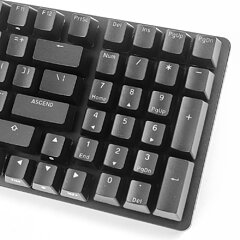
- KEY FACTOR ON REPLACING OLD COMPUTERS AT WORK HOW TO
- KEY FACTOR ON REPLACING OLD COMPUTERS AT WORK INSTALL
- KEY FACTOR ON REPLACING OLD COMPUTERS AT WORK MANUAL
- KEY FACTOR ON REPLACING OLD COMPUTERS AT WORK UPGRADE
To activate Windows 10 with a previous product key, use these steps:
KEY FACTOR ON REPLACING OLD COMPUTERS AT WORK MANUAL
Or you can contact Microsoft support for assistance if the manual process isn't working. If the computer is no longer in service or connected to the internet, it's not necessary to use these steps since you should be able to use the product key on the new system without issues.Īfter deactivating the previous installation, you can use the product key to activate a new installation manually. Instead, the process will prevent the detection of the same product key being used in multiple devices, allowing you to reactivate another computer. While the instructions outlined above will uninstall the product key, the process won't remove the activation from the Microsoft servers. Once you complete the steps, you are ready to use the product key to activate the same edition of Windows 10 on a new system.

To remove the product key on Windows 10, use these steps:

You only have to remove the license from the system, and then you can apply the same key on the new computer. On a computer with a retail license of Windows 10, you can transfer the product key to a new device.
KEY FACTOR ON REPLACING OLD COMPUTERS AT WORK HOW TO
How to transfer a product key to a new PC on Windows 10
KEY FACTOR ON REPLACING OLD COMPUTERS AT WORK UPGRADE
Also, if you upgraded to Windows 10 Pro from Windows 10 Home by purchasing the upgrade through the Microsoft Store, you can transfer the license to a new computer because the product key will be converted into a digital license linked to your Microsoft account. In this case, the product key is not transferable, and you are not allowed to use it to activate another device. If you have a computer pre-installed with Windows 10, such as a Surface Laptop 4 or a Dell XPS 13, you are dealing with an "OEM" license. The only problem is that sometimes, you may still encounter activation errors, which you may not resolve until you contact Microsoft support directly and explain the situation. Generally speaking, you do not have a limit on the number of times you can transfer a license as long as you deactivate the previous installation, so you're not using the same product key on more than one system. If you plan to upgrade to Windows 10 from Windows 8.1 or Windows 7 with a retail copy, you can also move the product key to another device. Repeat this for both the mouse and the keyboard and see if they become operational again or not.If you purchased a Retail license of Windows 10 (opens in new tab), you are entitled to transfer the product key to another computer.

KEY FACTOR ON REPLACING OLD COMPUTERS AT WORK INSTALL
Please give the system a minute or two to run the update task and when it's finished a message will appear, telling you if the drivers are up to date or not if not, follow the instructions on screen to install the updates. When you do a window will appear - in it, click on the "Drivers" tab and locate and click on the box reading "Update Drivers." This will start the update process. Right-click over each specific device listing and select Properties from the menu that appears. This will reveal the listings for those installed devices. In the window that appears, locate the lines for "Keyboard" and "Mice and other pointing devices" respectively and expand the lines (one by one) by clicking on the plus sign or arrow to the left of the lines themselves. This will launch the Windows Device Manager. To do this in Vista, click on Start, then Run, type "devmgmt.msc" (without quotes) into the blank that appears and hit OK.


 0 kommentar(er)
0 kommentar(er)
